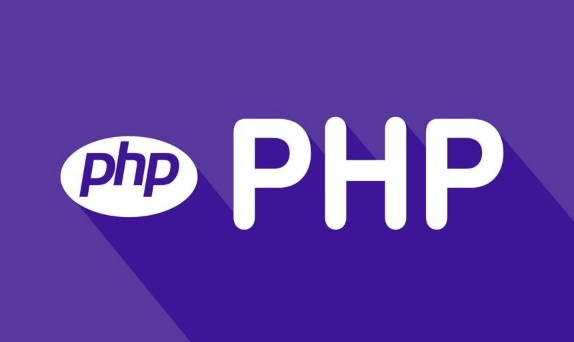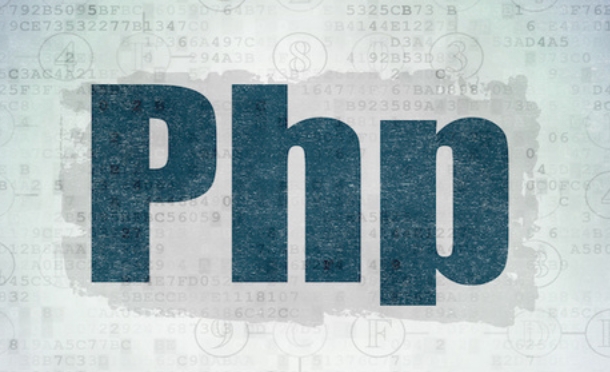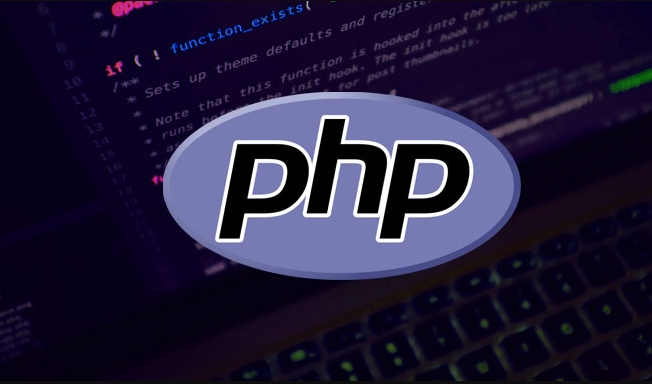 Backend Development
Backend Development
 PHP Tutorial
PHP Tutorial
 Common problems and solutions for setting up a PHP environment
Common problems and solutions for setting up a PHP environment
Common problems and solutions for setting up a PHP environment
Jun 27, 2025 am 01:01 AMCommon problems in building a PHP environment include environment variable configuration errors, extension loading failures, version conflicts, etc. 1. The PHP command cannot be run or the prompt "not an internal or external command" is prompted: add the PHP installation directory to the system PATH environment variable and restart the terminal or editor; if using XAMPP or WAMP, make sure that the Apache service is started. 2. PHP extension cannot be loaded: Enable the corresponding extension in php.ini, confirm that the configuration file you are currently using is modified, and check whether the required DLL file exists in the ext directory. 3. Version incompatibility results in code exceptions: view the current version through php -v, use the version management tool to switch to the required version of the project, and specify the interpreter path in the IDE to avoid global settings conflicts. Paying attention to these key points can effectively solve most environmental construction problems.

When building a PHP environment, many people will encounter some common problems, such as environment variable configuration errors, extension loading failures, version conflicts, etc. These problems may not seem to be big, but if they are not handled clearly, they will affect development efficiency and even project operation. Below are some points and corresponding solutions that are easy to hit the pit in actual operations.

Unable to run PHP commands or prompt "not internal or external commands"
This problem usually occurs on Windows because the system cannot find the path to php.exe . Even if you have installed PHP, if you do not set the environment variables, you will report an error when executing php -v in the terminal.

Solution:
- Find your PHP installation directory (for example,
C:\phporD:\xampp\php). - Add this directory to the system's
PATHenvironment variable. - After restarting the terminal or editor, try to execute
php -vagain.
If you are using an integrated environment such as XAMPP or WAMP, make sure you start the Apache service and then test whether PHP is available.

PHP extension cannot be loaded (such as mysqli, pdo_mysql, etc.)
Many projects rely on specific PHP extensions, such as the commonly used mysqli or pdo_mysql for database connections. If you find that these extensions are not in effect, it may be the following reasons:
- Extension not enabled : Open the
php.inifile and find a line similar to;extension=mysqli, remove the previous semicolon to enable it. - Configuration file path error : Sometimes
php.iniyou modified is not the currently running configuration file. You can usephp -i | grep "Loaded Configuration File"to view the location of the configuration file in use. - DLL file missing (Windows) : Some extensions depend on
.dllfiles, which can also fail to load if not copied to theextdirectory correctly.
It is recommended to check whether all commonly used extensions are enabled as soon as possible after installing PHP to avoid detours during subsequent debugging.
Version incompatibility causes code to run abnormally
There are many versions of PHP, such as 7.4, 8.0, 8.1, 8.2, etc. Different projects may have version requirements. If you have installed multiple PHP versions locally and do not switch correctly, you may have syntax errors or the function does not exist.
Coping methods:
- Use
php -vto view the current version. - If you are managing multiple PHP versions (such as Laragon, XAMPP, or phpbrew) through tools, make sure you switch to the correct version.
- Understand the PHP version required by the project before development and stay consistent.
Some IDEs (such as PhpStorm) also support specifying interpreter paths, which can avoid confusion caused by global settings.
Basically these common questions. Although building a PHP environment seems simple, there are still many details that are easy to ignore. As long as you pay attention to the key points of path settings, extension loading and version matching, most of the problems can be solved easily.
The above is the detailed content of Common problems and solutions for setting up a PHP environment. For more information, please follow other related articles on the PHP Chinese website!

Hot AI Tools

Undress AI Tool
Undress images for free

Undresser.AI Undress
AI-powered app for creating realistic nude photos

AI Clothes Remover
Online AI tool for removing clothes from photos.

Clothoff.io
AI clothes remover

Video Face Swap
Swap faces in any video effortlessly with our completely free AI face swap tool!

Hot Article

Hot Tools

Notepad++7.3.1
Easy-to-use and free code editor

SublimeText3 Chinese version
Chinese version, very easy to use

Zend Studio 13.0.1
Powerful PHP integrated development environment

Dreamweaver CS6
Visual web development tools

SublimeText3 Mac version
God-level code editing software (SublimeText3)
 PHP Variable Scope Explained
Jul 17, 2025 am 04:16 AM
PHP Variable Scope Explained
Jul 17, 2025 am 04:16 AM
Common problems and solutions for PHP variable scope include: 1. The global variable cannot be accessed within the function, and it needs to be passed in using the global keyword or parameter; 2. The static variable is declared with static, and it is only initialized once and the value is maintained between multiple calls; 3. Hyperglobal variables such as $_GET and $_POST can be used directly in any scope, but you need to pay attention to safe filtering; 4. Anonymous functions need to introduce parent scope variables through the use keyword, and when modifying external variables, you need to pass a reference. Mastering these rules can help avoid errors and improve code stability.
 How to handle File Uploads securely in PHP?
Jul 08, 2025 am 02:37 AM
How to handle File Uploads securely in PHP?
Jul 08, 2025 am 02:37 AM
To safely handle PHP file uploads, you need to verify the source and type, control the file name and path, set server restrictions, and process media files twice. 1. Verify the upload source to prevent CSRF through token and detect the real MIME type through finfo_file using whitelist control; 2. Rename the file to a random string and determine the extension to store it in a non-Web directory according to the detection type; 3. PHP configuration limits the upload size and temporary directory Nginx/Apache prohibits access to the upload directory; 4. The GD library resaves the pictures to clear potential malicious data.
 Commenting Out Code in PHP
Jul 18, 2025 am 04:57 AM
Commenting Out Code in PHP
Jul 18, 2025 am 04:57 AM
There are three common methods for PHP comment code: 1. Use // or # to block one line of code, and it is recommended to use //; 2. Use /.../ to wrap code blocks with multiple lines, which cannot be nested but can be crossed; 3. Combination skills comments such as using /if(){}/ to control logic blocks, or to improve efficiency with editor shortcut keys, you should pay attention to closing symbols and avoid nesting when using them.
 How Do Generators Work in PHP?
Jul 11, 2025 am 03:12 AM
How Do Generators Work in PHP?
Jul 11, 2025 am 03:12 AM
AgeneratorinPHPisamemory-efficientwaytoiterateoverlargedatasetsbyyieldingvaluesoneatatimeinsteadofreturningthemallatonce.1.Generatorsusetheyieldkeywordtoproducevaluesondemand,reducingmemoryusage.2.Theyareusefulforhandlingbigloops,readinglargefiles,or
 Tips for Writing PHP Comments
Jul 18, 2025 am 04:51 AM
Tips for Writing PHP Comments
Jul 18, 2025 am 04:51 AM
The key to writing PHP comments is to clarify the purpose and specifications. Comments should explain "why" rather than "what was done", avoiding redundancy or too simplicity. 1. Use a unified format, such as docblock (/*/) for class and method descriptions to improve readability and tool compatibility; 2. Emphasize the reasons behind the logic, such as why JS jumps need to be output manually; 3. Add an overview description before complex code, describe the process in steps, and help understand the overall idea; 4. Use TODO and FIXME rationally to mark to-do items and problems to facilitate subsequent tracking and collaboration. Good annotations can reduce communication costs and improve code maintenance efficiency.
 Learning PHP: A Beginner's Guide
Jul 18, 2025 am 04:54 AM
Learning PHP: A Beginner's Guide
Jul 18, 2025 am 04:54 AM
TolearnPHPeffectively,startbysettingupalocalserverenvironmentusingtoolslikeXAMPPandacodeeditorlikeVSCode.1)InstallXAMPPforApache,MySQL,andPHP.2)Useacodeeditorforsyntaxsupport.3)TestyoursetupwithasimplePHPfile.Next,learnPHPbasicsincludingvariables,ech
 How to access a character in a string by index in PHP
Jul 12, 2025 am 03:15 AM
How to access a character in a string by index in PHP
Jul 12, 2025 am 03:15 AM
In PHP, you can use square brackets or curly braces to obtain string specific index characters, but square brackets are recommended; the index starts from 0, and the access outside the range returns a null value and cannot be assigned a value; mb_substr is required to handle multi-byte characters. For example: $str="hello";echo$str[0]; output h; and Chinese characters such as mb_substr($str,1,1) need to obtain the correct result; in actual applications, the length of the string should be checked before looping, dynamic strings need to be verified for validity, and multilingual projects recommend using multi-byte security functions uniformly.
 Quick PHP Installation Tutorial
Jul 18, 2025 am 04:52 AM
Quick PHP Installation Tutorial
Jul 18, 2025 am 04:52 AM
ToinstallPHPquickly,useXAMPPonWindowsorHomebrewonmacOS.1.OnWindows,downloadandinstallXAMPP,selectcomponents,startApache,andplacefilesinhtdocs.2.Alternatively,manuallyinstallPHPfromphp.netandsetupaserverlikeApache.3.OnmacOS,installHomebrew,thenrun'bre





